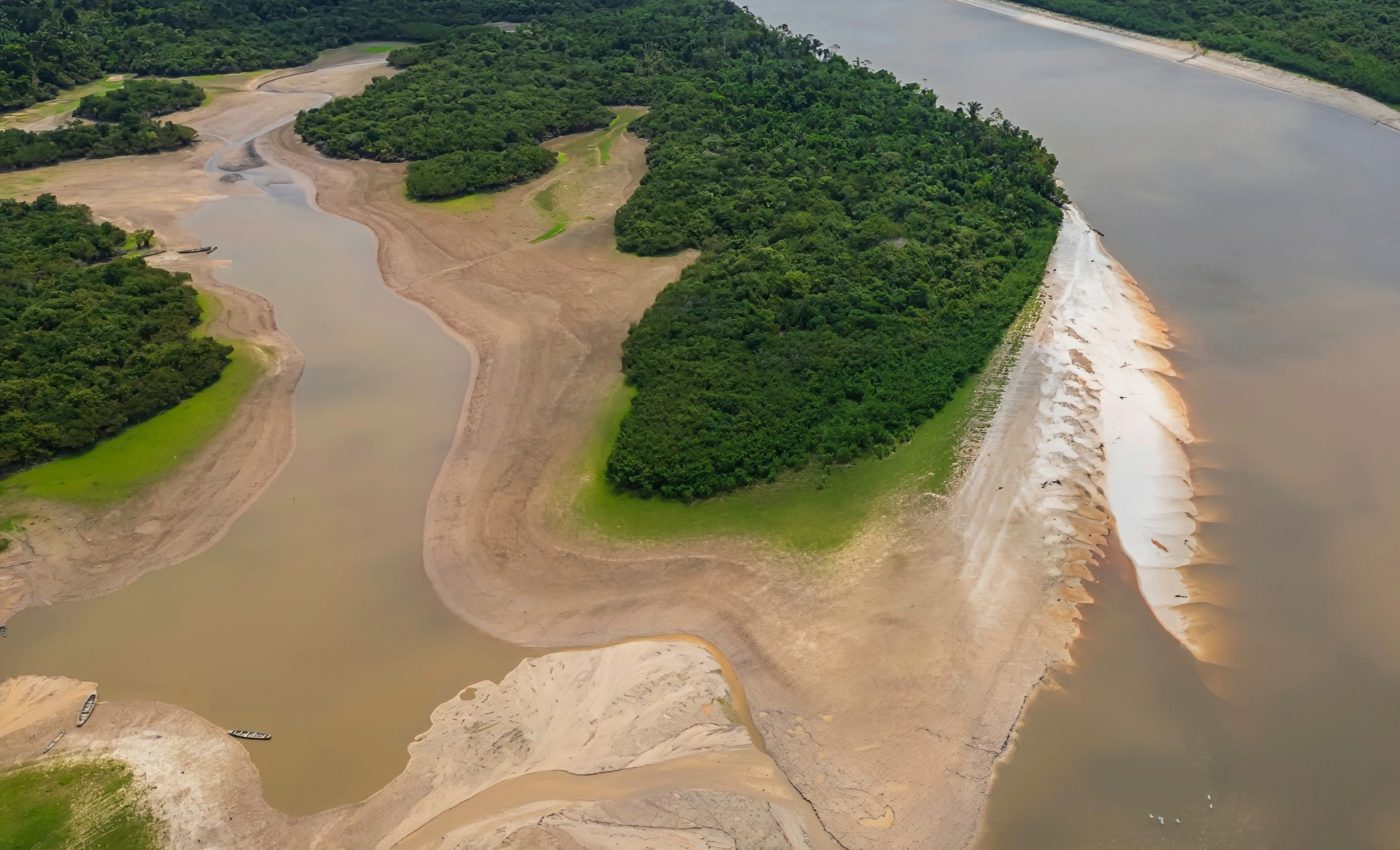
Amazon drought: Fishers in crisis as their biggest catch disappears
Two years of severe drought in the State of Amazonas is having a devastating impact on one of the Amazon’s noteworthy achievements – the sustainable economy based on catching the gargantuan pirarucu fish. This sustainability is now facing a dangerous headwind.
Almost 6,000 people residing by the rivers in Amazonas State, Brazil, are legally permitted to fish for this mammoth creature.
Regrettably, they have witnessed a dramatic decrease in pirarucu catches, combined with escalating costs. This has led to a widespread call for governmental support, and the urgent need to devise a strategy to adapt to the demands of our changing climate.
In the previous year, the catch reached only 70% of the 100,443 fish quota sanctioned by the government.
As we are in the height of the current year’s season (which runs from June to November) many communities are yet to commence their fishing due to the prevailing conditions. The outlook for this year’s catch is far from optimistic.
The tale of the pirarucu
Commencing in the Mamiraua region 25 years ago, managed fishing of the pirarucu has seen significant expansion.
The successful management of the resource saved the Amazon’s largest fish from becoming extinct and is now a vital source of income for locals in 10 sustainable conservation units and eight Indigenous territories. These areas boast negligible deforestation rates.
The giant pirarucu fish, that can weigh up to 200 kilograms (440 pounds), were historically resistant to climate changes, including droughts.
However, today’s low water levels have left Amazon fishers stranded, unable to transport their catch from isolated lakes to major rivers and cities.
In several areas, water levels decreased so rapidly that the transport connection was severed before the fishing season even started.
Amazon fishers feel the impact
In the São Raimundo community in the Medio Jurua region, fishing is commencing with a two-month delay, reflecting the current widespread situation.
To mitigate the impact, Coletivo Pirarucu, an organization representing 2,500 families living by the river, along with Indigenous families, has called for an extension of the fishing season until the end of January.
Even major rivers are not spared. As a result, navigation has been difficult, resulting in escalating costs and uncertainty amongst fishers.
The journey to transport fish from Carauari, a principal pirarucu producer, to the largest city of the Amazon, Manaus, usually takes up to four days. However, during the drought’s peak, this journey extended to ten days, and the transport cost doubled.
According to researcher Adalberto Luis Val from the National Institute for Amazonian Research, even the robust pirarucu is not immune to climate change.
“No fish can regulate body temperature. Then there’s water scarcity. As its level drops, you start to get a high amount of suspended material, leading to sludge build-up. It sticks to the gill area, blocking the processes that occur there,” explained Val.
Seeking support for Amazon fishers
Coletivo Pirarucu is advocating for fishermen to receive compensation for the losses brought on by climate change.
They issued an open letter last week, expressing their concerns and calling for the development of “climate change adaptation and mitigation strategies.”
At a higher level, James Bessa, a federal official responsible for pirarucu management, confirmed that Ibama, Brazil’s environmental body, is collaborating with other public bodies and local fishing associations to minimize the impact of extreme weather events.
Lastly, Adevaldo Dias, a riverine leader and president over the Chico Mendes Memorial, has made a plea for climate justice.
“The Indigenous and riverine peoples have minimal impact on the environment. We know that conserving the forest benefits both us and those outside it. And when extreme climate events occur, they are the most vulnerable,” said Dias.
The uncertain future of the fishing trade
The ongoing droughts have raised pressing questions about the sustainability of the pirarucu fishing trade and the resilience of the communities that depend on it.
Experts fear that without swift and effective intervention, the balance achieved through decades of conservation efforts could unravel.
The challenges faced by riverine and Indigenous communities extend beyond immediate economic hardship; they highlight a deeper vulnerability tied to the changing climate.
Efforts to protect the pirarucu and ensure that its harvest remains a cornerstone of the Amazon’s sustainable economy are at a crossroads.
If the current trend continues, the once-thriving pirarucu trade may face further obstacles, impacting food security, local livelihoods, and conservation outcomes.
—–
Like what you read? Subscribe to our newsletter for engaging articles, exclusive content, and the latest updates.
Check us out on EarthSnap, a free app brought to you by Eric Ralls and Earth.com.
—–













